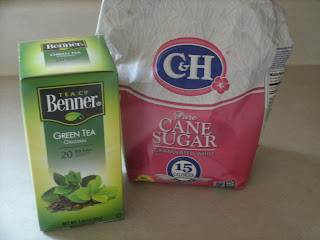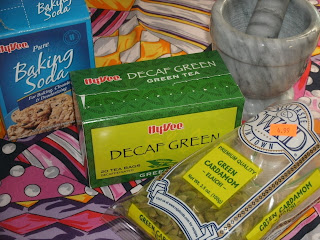Persian Tea
Persian Tea
(No, it's not catnip tea.)
Persia, Iran. This country taught me my first party trick with tea. Yes, I am that weird. Anyway, I tried several different styles again.The first vlog I watched about Iranian tea was a sweet woman making lavender tea. It sounded neat, a unique tea to the region. However, I didn't find anyone else making tea that way. Since it sounded intriguing, I went ahead and tried it.
Meet the star of the show
I eventually settled on using a tablespoon of Earl Gray, a teaspoon of lavender, and 2 cardamom pods. I forgot to measure my water the second time I made it. The tea is supposed to be concentrated, and then diluted to personal taste with hot water when served. I know it was probably a cup of water or slightly less (250 ml or slightly less). This picture was from my first attempt, when I was using some different ratios.
Tea is traditionally brewed with a samovar, but I don't have one. My grandmother actually had one, but it was a purely decorative piece. It was given to her as a gift by a relative who served on an air force base in Iran in the late 1960's. I never knew exactly how it was as a kid. A samovar was traditionally used over coals, but electric versions exist now. They are metal, and there is a large urn on the bottom portion with a spigot on it, then a tiny teapot sits on top, and that is where you brew your tea concentrate. At Goodwill I found an urn that reminded me of the bottom portion of a samovar, but the top doesn't have the teapot on top.Like the teapot that reminded me of a Moroccan teapot, I'm not paying to essentially rent this thing before I take it back to Goodwill. Since I don't have the equipment, and I'm not buying one off the internet, it's improvisation time. For those of you who are purists to form, stop scrolling down.
Like now.
I mean it.
Once you see it, you can't un-see it!
I started with a larger pot of boiling water. I poured some of the hot water over my tea, then put a grate on top of the big pan left on to simmer.
This struck me as not being the safest method to use, so I put it on a back burner then stayed away from it as much as possible. In later trials, I put the tea pan directly on a warm burner. Apparently that is a method gaining popularity in the region, and avoids building towers of hot liquids.
I later tried a different method where the lip of one pan rested on the lip of another pan. This one looked a bit more safe, and worked pretty well, as long as you don't put too much liquid in the top pan.
Anyway, I simmered it for 15 minutes, strained, and sampled.
If you want to make a visually striking cup of tea, put some sugar in the bottom of a cup.
Add some hot water and stir until the sugar is dissolved. Then tip the cup slightly, and gently pour some tea down the side of the cup. It's really neat to watch the small eddies that develop in the tea as you float it over the bottom layer of hot water. You end up with this.
My first few pictures were not nicely staged. I was afraid that they layers would diffuse together quickly. Once I got the cup poured, and it was clear the layers would be there for a bit, I gently moved it to a place where I could take a better picture. The instructions said to stir the tea before drinking, but I wanted to see how long the layers would last.
When I got up the next morning, the bottom layer looked a little cloudy, but my layers were still there, just as they were in this picture. I didn't try drinking it. I'm not a fan of sweet tea, especially tea that has sat out for 14 or 15 hours, but it did look pretty.
Second attempt
The more common recipe I saw for Persian tea was 2 parts Darjeeling, 1 part Earl Gray, and a pinch of orange pekoe. I tried that next. Since I could only find Darjeeling tea bags, I used 2 tea bags, 1 tsp of Earl Gray, and a little orange pekoe (the same stuff I found to be rather weak in an earlier post). I used a cup (250 ml) water and put on a warm burner for 15 minutes to steep.Both made some good cups of tea. The lavender gave a nice flavor to the first batch of tea. For regular Persian tea, some instructions talked about adding rose petals to brew. Since I didn't have any, I added some of my rose water, and that made for a more interesting tea. I can't say that I am a huge fan of plain black tea, or Earl Gray, but it was a nice twist on a plain tea.
Since some sources talk about holding a sugar cube in your teeth while drinking your tea, I decided it was time to experiment. They aren't like the sugar cubes we get here. They are made to be harder to dissolve. The lavender tea lady showed saffron sugar with her brew, but I didn't have that either. I decided to try with a failed batch of ginger cough drops I had in my cupboard. I wanted a hard crack candy, but even though I cooked it to the temperature the recipe said, I ended up with what is essentially ginger taffy. I shaped some into cubes and gave it a shot. It imparted a good flavor, but they were so soft my front teeth were sinking through them as I drank.
I obviously didn't listen to adults when they told me not to play with my food.















Towers of hot liquids are probably safer around you than they would be around me.
ReplyDeleteThat was exactly what I was thinking when I tried that.
Delete